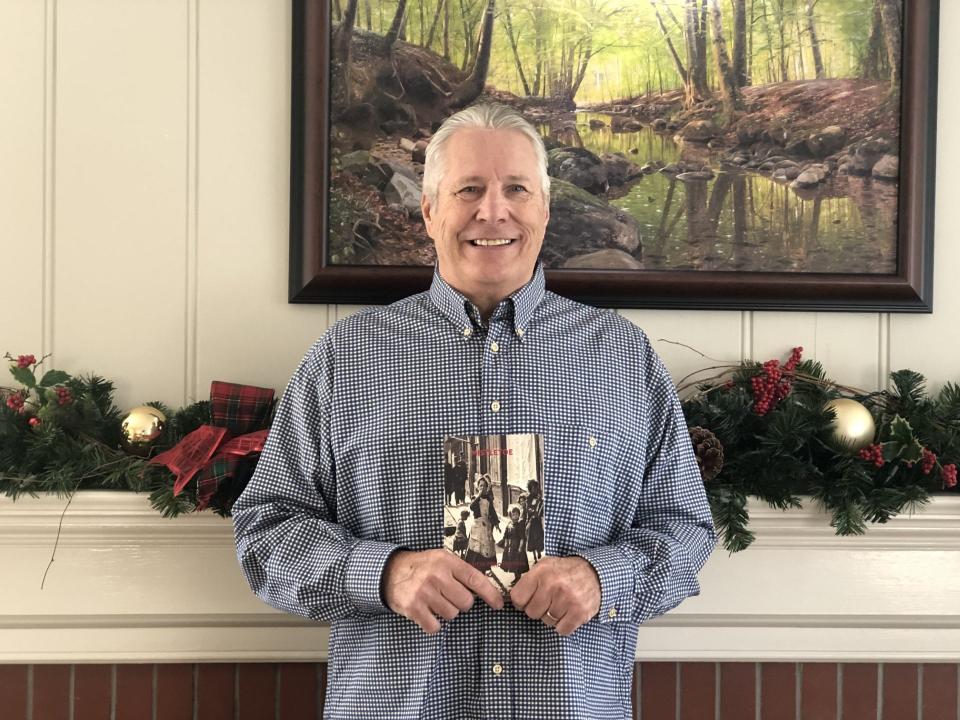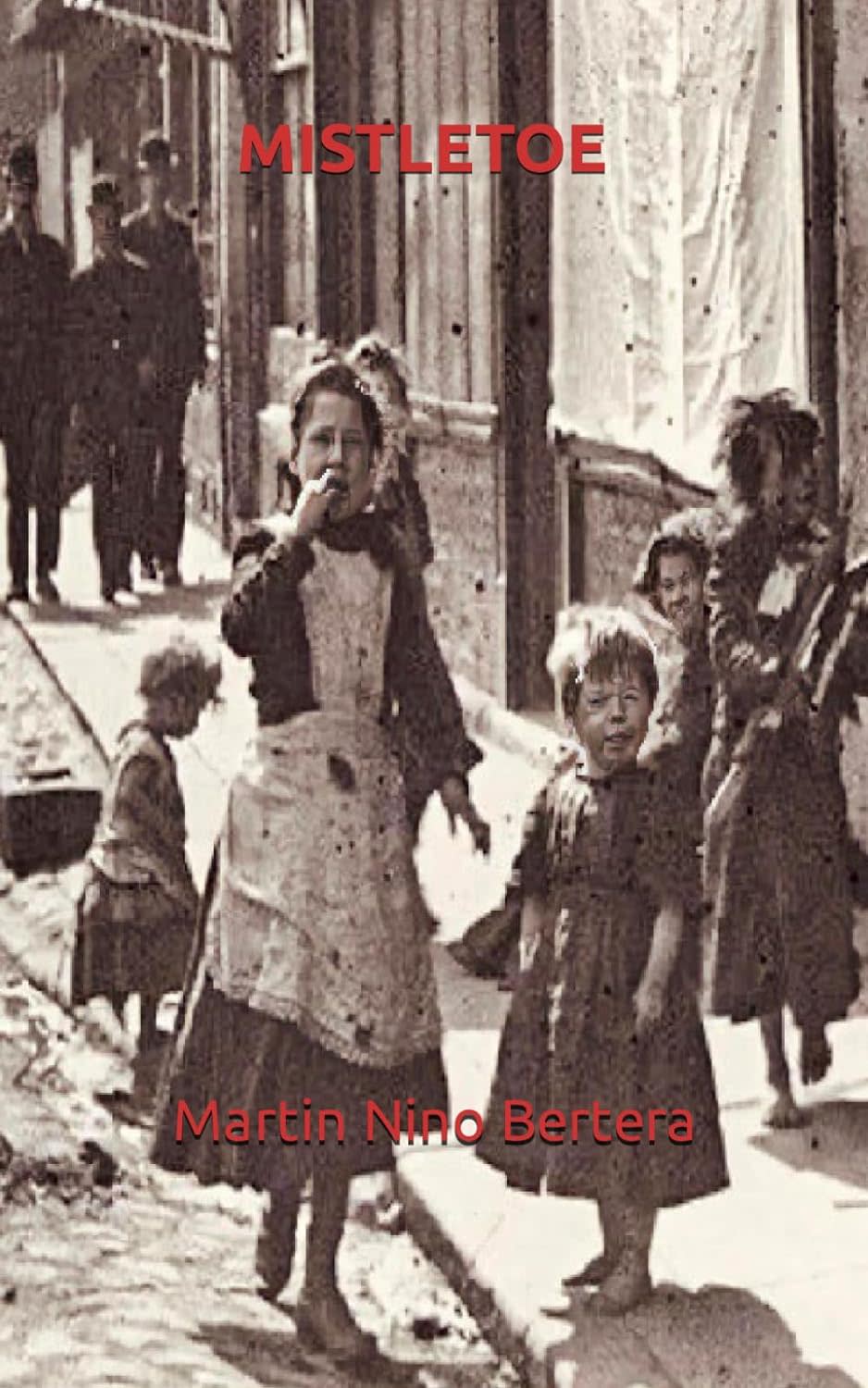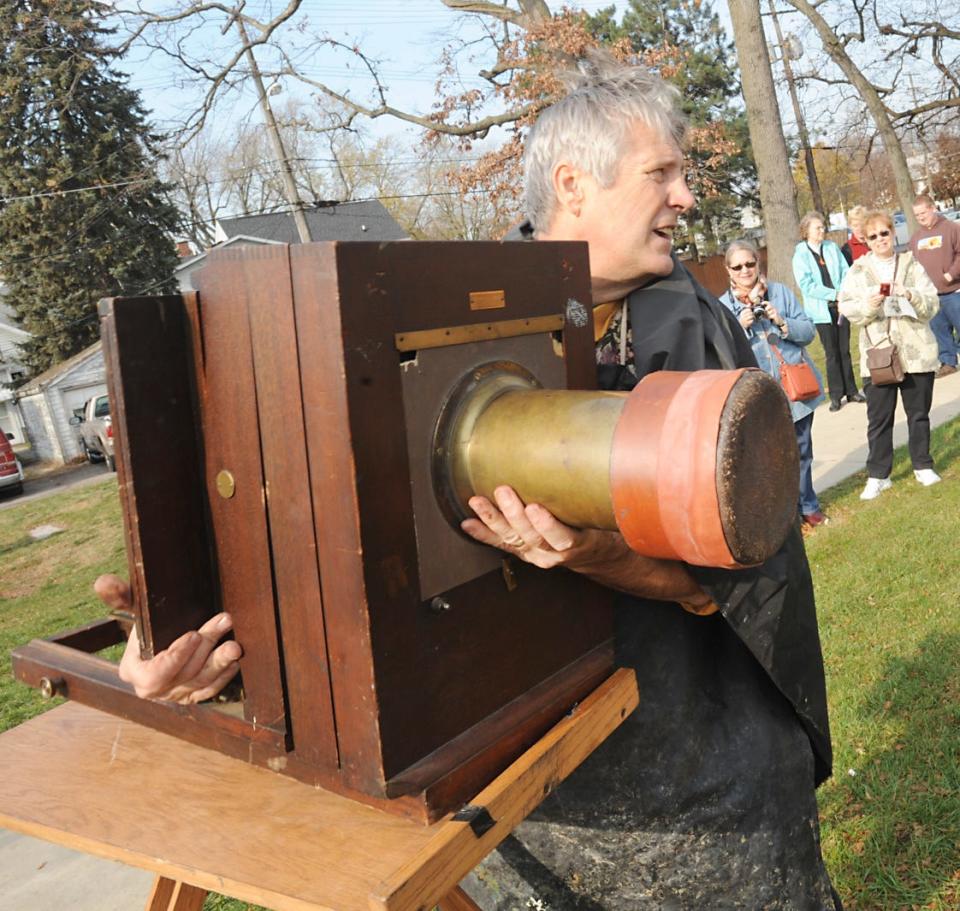Area historian pens first novel set in Michigan during the Civil War
MONROE COUNTY — A year of research, but a lifetime of reading went into Martin Bertera’s new book.
The Wyandotte man, who has helped out at Monroe’s River Raisin National Battlefield Park, is the author of several non-fiction history books. This year, for the first time, he used his research skills to write a novel.
Bertera recently self-published the paperback, 76-page historical novel “Mistletoe.” A Christmas story, it’s set in Michigan during the Civil War.
“Mistletoe” explores the history of orphan trains. Despite the name, "orphan trains" were typically boats that in the 1800s took orphaned children from New York City to quieter life in the Midwest.
In Bertera’s book, young Patricia O’Grady, an orphan from Ireland in the mid-1800s, is brought from New York to Wyandotte, where she endures a difficult life on a farm before finding a home with a kindly store owner and his daughter. At the end, Patricia gets to experience a family Christmas for the first time in years.

“It focuses on Christmas through the historical lens of a child’s life in downriver Michigan communities,” Bertera said.
“Mistletoe” contains a few historical photos and mentions several local communities, like Monroe, Trenton, Brownstown and Wyandotte.

“Monroe is mentioned five times in the Mistletoe,” Bertera said.
Although a fictional story, “Mistletoe” is based on actual events. Bertera enjoys researching America in the 1850s and ‘60s. That era included the election of Abraham Lincoln, the Civil War and the Irish Potato Famine, which brought many immigrants to this country.
“This story is the result of my years of reading historical books and magazines, which have inspired me to finally put pen to paper,” Bertera said. “I drew influence from various sources, including Charles Dickens’ writing, Civil War Christmas stories and documentaries about orphan trains. While this is not a completely original tale, I incorporated my own unique ideas and design.”
The author calls “Mistletoe” a story of hope that will appeal to teens and adults.
“Anyone who enjoys Christmas and the jolly old man in the red suit,” he said. “The story tells a tale of how, even in the darkest of times, we will be better. We must believe in people's goodness.”
Bertera’s family and friends encouraged him to publish the work.
“My original audience was just my immediate family and a few close friends. After reading the story, many said I should put it in book form,” Bertera said.
Bertera’s other books are "The 4th Michigan Infantry at the Battle of New Bridge, Virginia," "De Golyer Eighth Michigan Battery," "Cleaning up the Muss Letters of Doctor David Chamberlin," "The 4th Michigan Volunteer Infantry at Gettysburg," "The 4th Infantry in the Civil War (Michigan State University State Press)."
He’s currently working on two new titles.
Subscribe Now: For all the latest local developments, breaking news and high school sports content.

“I have one at the printer at this time. I have co-authored with Mary Johna Wein, ‘Soldiers Untold: Biographies of Civil War Soldiers from Wyandotte, Michigan,’ also, a history of the 18th Michigan Infantry,” Bertera said.Mike Sollars, president of the Brownstown Historical Society, speaks highly of Bertera’s books.
“His Civil War-related books are used as reference materials for researchers looking for Michigan-related Civil War facts,” Sollars said.
For more than 20 years Bertera has volunteered with the Brownstown Historical Society. He even manages its vintage baseball team, the Brownstown Volunteers.
Bertera also built historical dioramas for the Raisin River National Park Visitors Center in Monroe and the Gibraltar Historical Museum. He’s worked on historical films for the National Park Service and PBS.
“Mistletoe” can be purchased at the Wyandotte Historical Society, 2624 Biddle Ave., Wyandotte. Books also are available on Amazon.com.
“I’m giving $5 per book sold to the historical museums that sell them,” Bertera said.
— Contact reporter Suzanne Nolan Wisler at swisler@monroenews.com.
Sample text from Martin Bertera’s “Mistletoe”:
Location: New York City
“Upon the brick-paved sidewalk, she stood shoeless with flowers in hand. Making sure to hang tight to the black fence not to impede the figures coming and going, and not wanting to be run off by the police as a street rat, she stood with an outstretched hand. She heard the merry laughs and the chatter of others and caught sight of a few scornful looks thrown at her by the self-important passersby. Few took note of the utter woe of that young face. A couple of paces past her were an elderly mother and her son, a confirmed bachelor surely to be one for life. They were both a few rungs above poor, but only a few. The male dressed in the everyday fashion of the times, his head covered by a well-worn beaver-felt hat handed down to him after his father’s death; below that was a dark gray cravat, which lay upon his white shirt. His overcoat was a gray frock with the hem ending between his hip and knee, showing no flower attached to his lapel. He was a perfect customer for Patricia.
This article originally appeared on The Monroe News: Michigan historian writes book on Civil War in communities like Monroe

